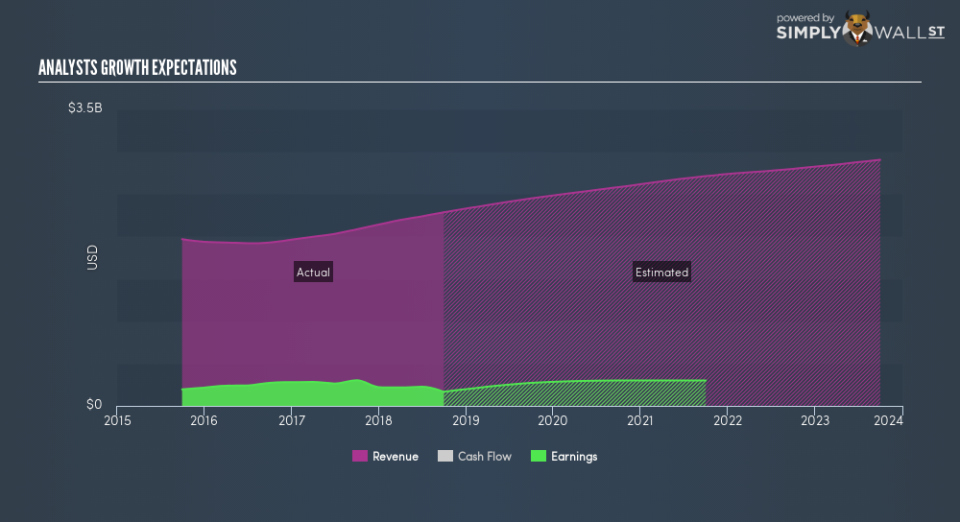What Is Valvoline Inc.’s (NYSE:VVV) Share Price Doing?

Valvoline Inc. (NYSE:VVV), which is in the chemicals business, and is based in United States, saw significant share price movement during recent months on the NYSE, rising to highs of $21.62 and falling to the lows of $18.62. Some share price movements can give investors a better opportunity to enter into the stock, and potentially buy at a lower price. A question to answer is whether Valvoline’s current trading price of $19.13 reflective of the actual value of the mid-cap? Or is it currently undervalued, providing us with the opportunity to buy? Let’s take a look at Valvoline’s outlook and value based on the most recent financial data to see if there are any catalysts for a price change.
See our latest analysis for Valvoline
What’s the opportunity in Valvoline?
According to my valuation model, the stock is currently overvalued by about 43.69%, trading at US$19.13 compared to my intrinsic value of $13.31. This means that the buying opportunity has probably disappeared for now. In addition to this, it seems like Valvoline’s share price is quite stable, which could mean two things: firstly, it may take the share price a while to fall back down to an attractive buying range, and secondly, there may be less chances to buy low in the future once it reaches that value. This is because the stock is less volatile than the wider market given its low beta.
What kind of growth will Valvoline generate?
Investors looking for growth in their portfolio may want to consider the prospects of a company before buying its shares. Although value investors would argue that it’s the intrinsic value relative to the price that matter the most, a more compelling investment thesis would be high growth potential at a cheap price. Valvoline’s earnings over the next few years are expected to increase by 81%, indicating a highly optimistic future ahead. This should lead to more robust cash flows, feeding into a higher share value.
What this means for you:
Are you a shareholder? VVV’s optimistic future growth appears to have been factored into the current share price, with shares trading above its fair value. However, this brings up another question – is now the right time to sell? If you believe VVV should trade below its current price, selling high and buying it back up again when its price falls towards its real value can be profitable. But before you make this decision, take a look at whether its fundamentals have changed.
Are you a potential investor? If you’ve been keeping tabs on VVV for some time, now may not be the best time to enter into the stock. The price has surpassed its true value, which means there’s no upside from mispricing. However, the positive outlook is encouraging for VVV, which means it’s worth diving deeper into other factors in order to take advantage of the next price drop.
Price is just the tip of the iceberg. Dig deeper into what truly matters – the fundamentals – before you make a decision on Valvoline. You can find everything you need to know about Valvoline in the latest infographic research report. If you are no longer interested in Valvoline, you can use our free platform to see my list of over 50 other stocks with a high growth potential.
To help readers see past the short term volatility of the financial market, we aim to bring you a long-term focused research analysis purely driven by fundamental data. Note that our analysis does not factor in the latest price-sensitive company announcements.
The author is an independent contributor and at the time of publication had no position in the stocks mentioned. For errors that warrant correction please contact the editor at editorial-team@simplywallst.com.

